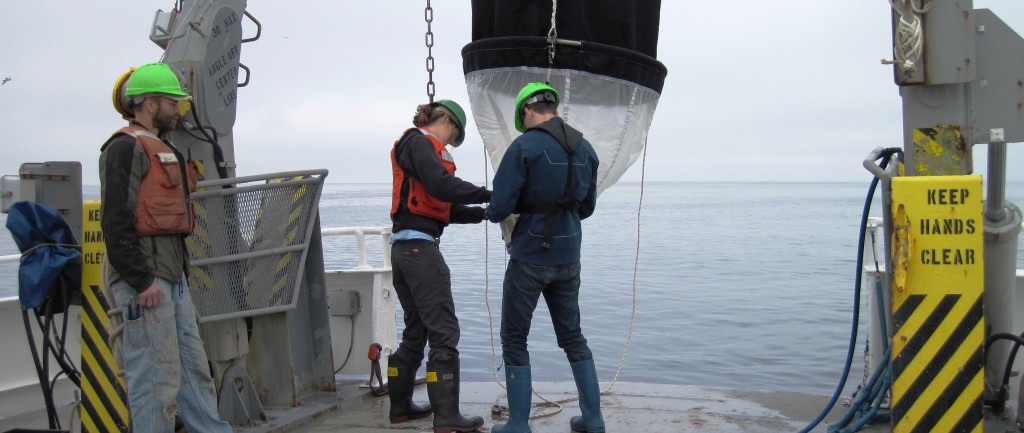The goals of this portion of our reseach are to:
- create an understanding of how amino acid data (quantitative, 30+ years worth) interface with proteomic data (mostly qualitative, <5years),
- evaluate protein degradation in suspended and sinking particles in the ocean using both tools(amino acid and proteomic approaches),
- and to develop targetted proteomics approaches to quantify specific enzymes in the ocean.
To better understand ecosystem function, organic matter diagenesis and past ocean conditions, the AOG Lab develops analytical approaches that leverage the information in peptide and protein sequences. If proteins and peptides can be quantitatively extracted from aquatic systems, the powerful tool of ‘proteomics’ can be brought to bear on unanswered questions regarding protein source and stability in the environment.
Our initial forays into marine proteomics used first-generation MALDI-ToF equipment. We used MALDI-ToF-MS to determine the bacterial hydrolysis patterns of proteins added to marine sediments and waters (Nunn et al. 2003) and to evaluate the extracellular polymers of Phaeocystis globosa and P. antarctica (Solomon et al 2003).
Currently we use LC-MSn for two purposes; targeted quantitative detection of proteins of interest, and metaproteomics of whole systems.
Our targeted proteomics approach relies of finding unique peptide markers for proteins of interest, obtaining 13C-labeled versions of the peptides of interest, and then adding the labeled peptides to marine samples prior to extraction and quantificartion. This ‘internal standard’ approach allows us to very sensitively quantify the abundance of proteins of interest. This work is conducted using a Waters Xevo TQ-S triple quadrupole mass spectrometer. The instrument can be interfaced with either a Waters Acquity UPLC or a Waters nanoUPLC. AOG is a proud founding lab of the Microbial Metbolomics Research Center here at UW.
Our metaproteomics work is currently conducted through collaboration with the UW’s Proteomics Resourse (UWPR) at the Fred Hutchinson Cancer Research Center. After non-quantitative extraction and trypsin digest, we use a linear ion trap-orbitrap (LTQ-OT) hybrid mass spectrometer (Thermo Fisher) coupled to a NanoAcquity HPLC (Waters Corporation) for analyses. Data are worked up using the proteomics pipeline and relying on X! Tandem for searches.
Ultimately, our goal is to devise a quantitative protocol for extraction and identification of proteins from sediments. When we reach this goal we will be able to determine both what the source organism is (potentially to the species level) and also what unique compositions and conformations lead to preservation of proteins in sedimentary systems. Although it may seem farfetched, it is not unreasonable to predict that one day our community will be able to extract intact protein or peptide fragments out of sediments and determine what planktonic assemblage existed in the water column at the time the sediments were deposited, their physiological status as well as perhaps determining the sedimentary community structure, depending on what peptides have a propensity for preservation.
